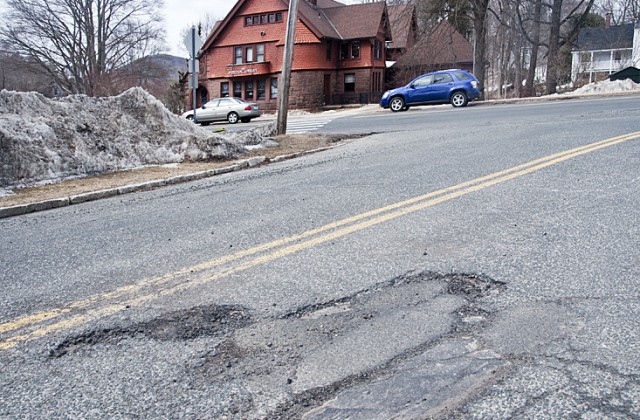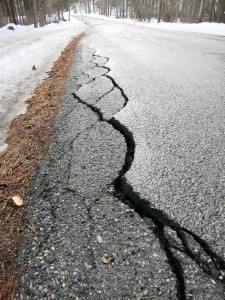Winter Snows Are Tough on Town Roads
Crews work overtime to keep up
By John G. Funchion
An unrelenting winter with its lingering blanket of snow and ice pummeled Norfolk this year, and its aftermath left our town with a spate of nerve-jangling, car-wrecking swells, depressions and potholes.
Most of the concerns of residents were not so much about potholes but about those ubiquitous giant depressions and swells in the roads.
According to John Allyn, Norfolk’s supervisor of public works, “It was the depressions made by pipes under the road that caused a great deal of the trouble. Our road crews were more concerned about those depressions and swells. Fortunately, there were not too many mechanical problems. Sean Muzzulin, our garage mechanic, kept all of our trucks in excellent condition despite all those bumps in the road.”
Allyn acknowledged that, between overtime and salt, the budget was overextended by about $22,000. Most of that was for the salt, while $9,400 went to overtime for the drivers. First Selectman Sue Dyer added that “these figures might end up a little higher since we didn’t get all of the bills until March 1. The $9,400 was not record breaking.” Although many residents are currently concerned about property revaluation, the tax impact of this year’s severe winter will be minimal.
Some of the roads hardest hit with depressions and swells were Route 272 South, Winchester Road, Bruey Road, upper Mountain Road and Route 44 from the Norfolk Library to George’s Garage. The worst vehicle-destroying depression was on upper Estey Road. Mountain Road near the ball field and Westside Road up to Windrow Road were fairly smooth.
As for potholes, most were located on Route 44 between the Norfolk Library and Laurel Way, the juncture of Maple Avenue and Laurel Way, and a few at the far end of Route 272 South.
Potholes can range from a few inches wide and a few inches deep to several feet wide and a foot deep. Two factors have to be present to create a pothole: water and traffic. Precipitation causes moisture to collect below the paved surface. With cold temperatures, the moisture freezes the subbase and soil, which pushes up the surface. When thawing occurs, the moisture drains away, creating a space under the pavement. Road traffic then pulverizes the surface, resulting in a gaping, ever-growing, unsettling hole.
Potholes are destructive and dangerous. They can cause severe crashes, resulting in injury and death.
The quick temporary fix for a pothole is cold patch, a cold amalgam of asphalt-patching compound. Very little cold patch was used in Norfolk this year. According to Allyn, “Although it’s more expensive, we bought it in small bags instead of in bulk. Bulk cold patch tends to freeze in the cold, making it unusable. When warmer weather comes, we’ll use the more permanent hot asphalt.”
Photo by Bruce Frisch. Pothole on the street bordering the village green.


